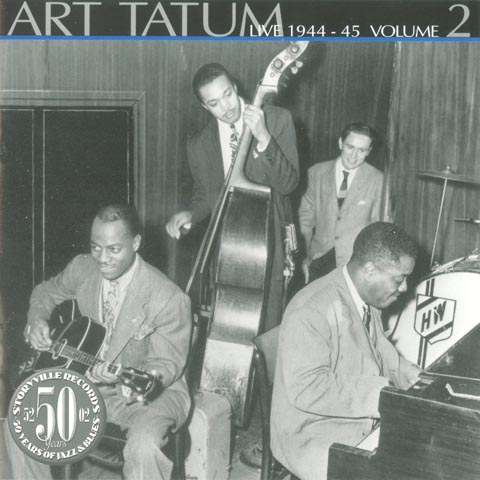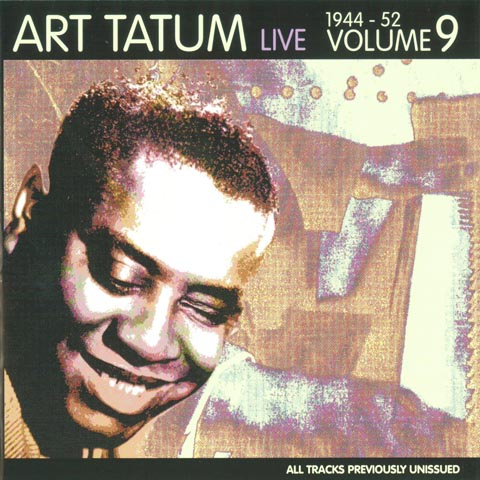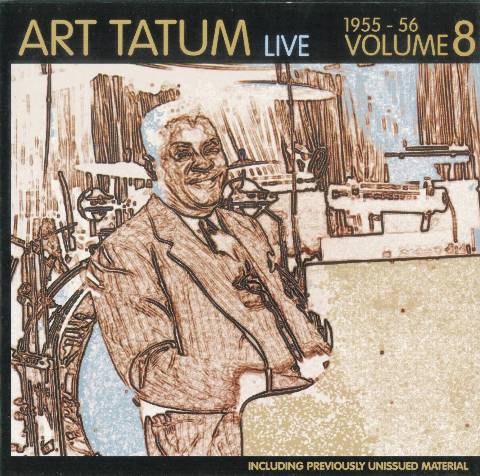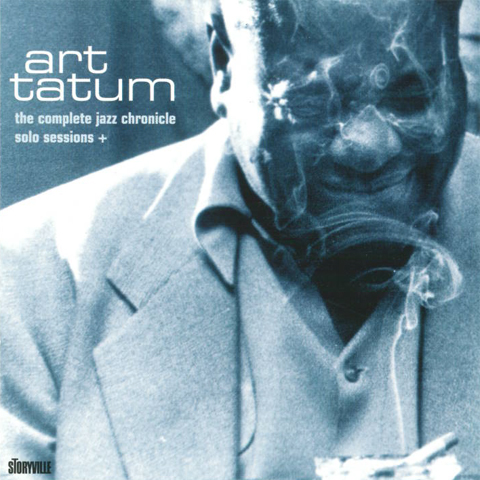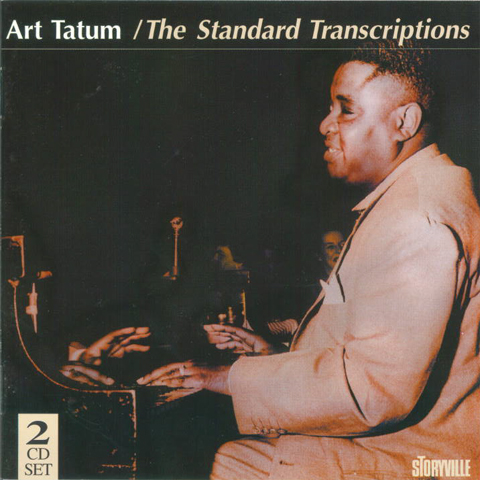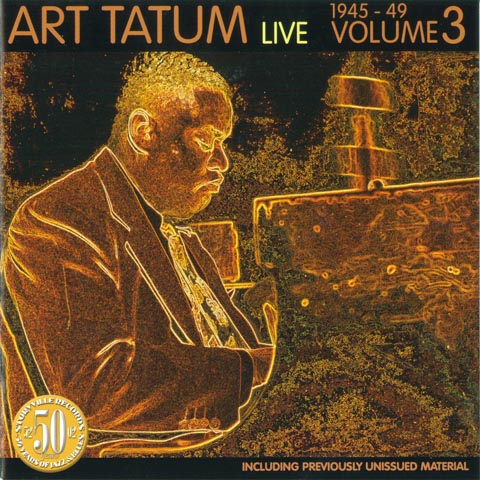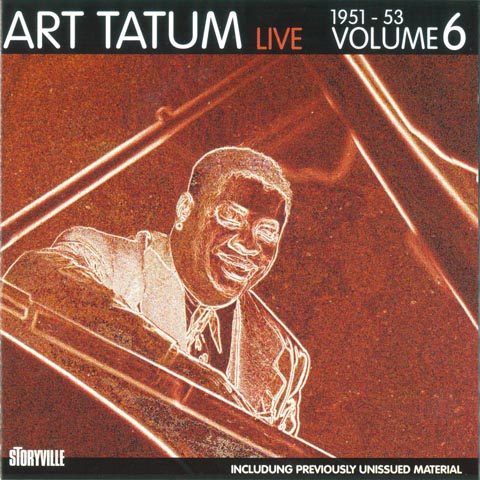Arthur “Art” Tatum, Jr. (October 13, 1909 – November 5, 1956) was an American jazz pianist and virtuoso who played with phenomenal facility despite being nearly blind since birth. Tatum is widely acknowledged as one of the greatest jazz pianists of all time and he was a major influence on later generations of jazz pianists.
He was noted for the complexity and speed of his performances, which set a new standard for jazz piano virtuosity. Critic Scott Yanow wrote, “Tatum’s quick reflexes and boundless imagination kept his improvisations filled with fresh (and sometimes futuristic) ideas that put him way ahead of his contemporaries … Art Tatum’s recordings still have the ability to scare modern pianists For a musician of such stature, there is very little published information available about Tatum’s life. Only one full-length biography has been published, Too Marvelous for Words, by James Lester. Lester interviewed many of Tatum’s contemporaries for the book and drew from many articles published about him.
Tatum was born in Toledo, Ohio. His father, Arthur Tatum, Sr., was a guitarist and an elder at Grace Presbyterian Church, where his mother, Mildred Hoskins, played piano. He had two siblings, Karl and Arlene. From infancy he suffered fromcataracts (of disputed cause) which left him blind in one eye and with only very limited vision in the other. A number of surgical procedures improved his eye condition to a degree but some of the benefits were reversed when he was assaulted in 1930 at age 20.
A child prodigy with perfect pitch, Tatum learned to play by ear, picking out church hymns by the age of three, learning tunes from the radio and copying piano roll recordings his mother owned. In a Voice of America interview, he denied the widespread rumor that he learned to play by copying piano roll recordings made by two pianists. He developed an incredibly fast playing style, without losing accuracy. As a child he was also very sensitive to the piano’s intonation and insisted it be tuned often.
While playing piano was the most obvious application of his mental and physical skills, he also had an encyclopedic memory for Major League Baseball statistics. In 1925, Tatum moved to the Columbus School for the Blind, where he studied music and learned braille. Subsequently he studied piano with Overton G. Rainey at either the Jefferson School or the Toledo School of Music. Rainey, who too was visually impaired, likely taught Tatum in the classical tradition, as Rainey did not improvise and discouraged his students from playing jazz. In 1927, Tatum began playing on Toledo radio station WSPD as ‘Arthur Tatum, Toledo’s Blind Pianist’, during interludes in Ellen Kay’s shopping chat program and soon had his own program. By the age of 19, Tatum was playing at the local Waiters’ and Bellmens’ Club. As word of Tatum spread, national performers passing through Toledo, including Duke Ellington, Louis Armstrong, Joe Turner and Fletcher Henderson, would make it a point to drop in to hear the piano phenomenon. Tatum drew inspiration from the pianists James P. Johnson and Fats Waller, who exemplified the stride piano style, and from the more “modern” Earl Hines, six years Tatum’s senior. Tatum identified Waller as his main influence, but according to pianist Teddy Wilson and saxophonist Eddie Barefield, “Art Tatum’s favorite jazz piano player was Earl Hines. He used to buy all of Earl’s records and would improvise on them. He’d play the record but he’d improvise over what Earl was doing ….. ‘course, when you heard Art play you didn’t hear nothing of anybody but Art. But he got his ideas from Earl’s style of playing – but Earl never knew that. A major event in his meteoric rise to success was his appearance at a cutting contest in 1933 at Morgan’s bar in New York City that included Waller, Johnson and Willie “The Lion” Smith. Standard contest pieces included Johnson’s “Harlem Strut” and “Carolina Shout” and Fats Waller’s “Handful of Keys.” Tatum triumphed with his arrangements of “Tea for Two” and “Tiger Rag”, in a performance that was considered to be the last word in stride piano. James P. Johnson, reminiscing about Tatum’s debut afterward, simply said, “When Tatum played Tea For Two that night I guess that was the first time I ever heard it really played.Tatum’s debut was historic because he outplayed the elite competition and heralded the demise of the stride era. He was not challenged further until stride specialist Donald Lambert initiated a half-serious rivalry with him. Tatum worked first around Toledo and Cleveland and then later in New York at the Onyx Club for a few months. He recorded his first four solo sides on the Brunswick label in March, 1933 Tatum returned to Ohio and played around the American midwest – Toledo, Cleveland, Detroit, Saint Louis and Chicago – in the mid-1930s and played on the Fleischman Hour radio program hosted by Rudy Vallee in 1935. He also played stints at the Three Deuces in Chicago and in Los Angeles played at The Trocadero, the Paramount and the Club Alabam. In 1937, he returned to New York where he appeared at clubs and played on national radio programs. The following year he embarked on the Queen Mary for England where he toured, playing for three months at Ciro’s Club owned by bandleader Ambrose. In the late 1930s, he returned to play and record in Los Angeles and New York.


